To install a hidden camera in a smoke detector, remove the cover, mount the camera inside, connect it to a power source, and then reattach the cover. Looking to add surveillance to your home or office discreetly?
One effective method is to install a hidden camera in a smoke detector. This innovative solution allows you to monitor any activity without arousing suspicion. In this guide, we will walk you through the step-by-step process of installing a hidden camera in a smoke detector to optimize your security system.
By following these instructions, you’ll be able to successfully set up your camera and maintain a hidden surveillance presence. Let’s get started with the installation process and improve your security measures effortlessly.
The Benefits Of Covert Camera Installation
In today’s world, ensuring the safety and security of our loved ones and our belongings is of utmost importance. One effective way to achieve this is by installing hidden cameras in strategic locations. One such covert camera installation option is hiding a camera within a smoke detector. This innovative approach not only provides a discreet way to monitor your surroundings but also offers several notable benefits. In this article, we will explore the advantages of covert camera installation in a smoke detector, focusing on enhancing home security and monitoring suspicious activity.
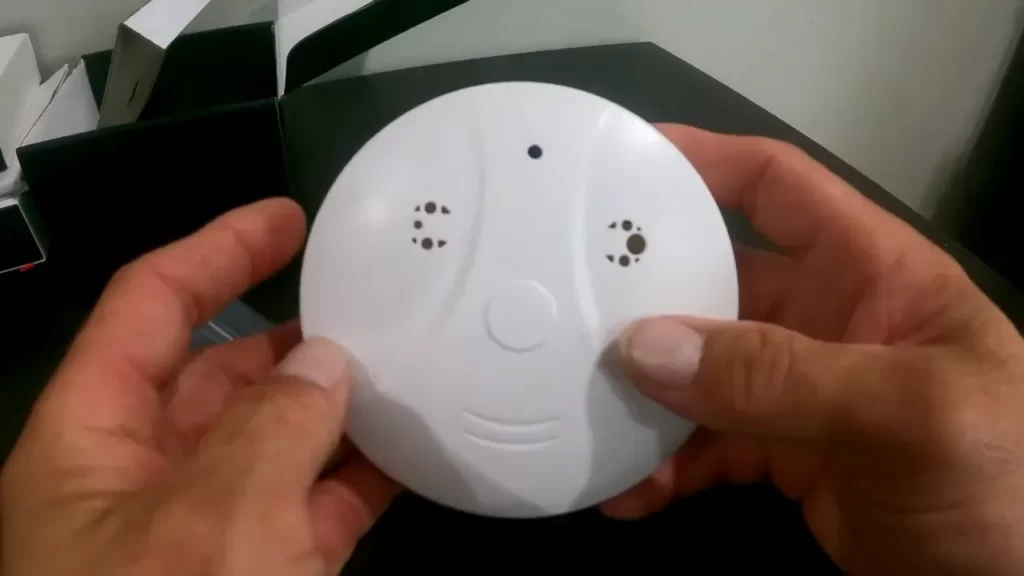
Enhancing Home Security
Your home is your sanctuary, and protecting it should be a top priority. By installing a hidden camera in a smoke detector, you are taking an extra step towards safeguarding your family and property. The covert nature of the camera ensures that potential intruders remain unaware of the surveillance, allowing you to gather important evidence in case of a break-in or any other suspicious activity. This added layer of security can provide you with peace of mind, knowing that your home is constantly monitored, even when you are away.
Monitoring Suspicious Activity
Being able to monitor suspicious activity within your home or office premises is crucial for maintaining a safe environment. With a hidden camera concealed in a smoke detector, you have the advantage of discreetly observing any unauthorized movements or incidents. Whether it’s to keep an eye on your nanny, monitor employees, or simply ensure the safety of your belongings, covert camera installation allows you to gather visual evidence that can help in identifying and addressing any potential threats or concerns.
Additionally, covert camera installations provide you with the opportunity to monitor areas that may otherwise be difficult to keep an eye on. For example, you can place a hidden camera in a smoke detector in areas such as stairwells, hallways, or blind spots, ensuring that every nook and cranny is covered.
In conclusion, installing a hidden camera in a smoke detector offers a range of benefits, including enhanced home security and the ability to monitor suspicious activity. By leveraging this covert camera installation option, you can stay one step ahead when it comes to protecting your loved ones and property. With the peace of mind that comes with effective surveillance, you can focus on what truly matters knowing that your surroundings are under constant watch.
Understanding Covert Camera Technology
Understanding Covert Camera Technology When it comes to safeguarding our homes and businesses, hidden cameras are an invaluable tool. These discreet devices can be easily installed within common objects, such as smoke detectors, providing an extra layer of security without drawing attention. In this article, we will delve deeper into the world of covert cameras and explore the different types available, as well as key features to consider when choosing the right one for your needs. H3: Types of Covert Cameras Covert cameras come in various forms, each designed to blend seamlessly into different surroundings. Here are the most common types: 1. Smoke Detector Cameras: These covert cameras are hidden within a working smoke detector, offering an inconspicuous way to monitor your space. They are ideal for both residential and commercial settings where smoke detectors are commonly found. 2. Clock Cameras: Clock cameras fit perfectly on a wall, shelf, or desk, perfectly masquerading as a regular timepiece. They capture high-quality video footage while providing a functional time display. 3. Bookshelf Cameras: Bookshelf cameras are designed to mimic a regular book, making them the perfect choice for capturing covert surveillance footage in libraries, offices, or study areas. 4. Wall Plug Cameras: These covert cameras are cleverly disguised as a wall plug, allowing for discreet placement in any room. They can blend effortlessly into any environment, whether it’s a home, office, or hotel room. H3: Key Features to Consider When choosing a covert camera, it’s essential to consider certain key features that make a difference in performance and ease of use. Here’s what you should keep in mind: 1. Video Quality: Look for a camera that offers high-definition video resolution. A camera with clear and crisp footage will provide accurate details for identification if needed. 2. Motion Detection: Opt for a covert camera with built-in motion activation. This feature allows the camera to start recording whenever movement is detected, saving storage space and making review easier. 3. Wi-Fi Connectivity: Wireless connectivity is crucial in today’s interconnected world. A covert camera with Wi-Fi capability allows remote access to live streams and recorded footage via a smartphone or computer. 4. Storage Capacity: Check the camera’s storage capacity, whether it uses a built-in memory card or allows for external storage options. Depending on the camera’s resolution and motion detection settings, consider the amount of storage needed to suit your requirements. 5. Power Source: Ensure the covert camera has a reliable power source that suits your intended installation location. Some cameras operate on batteries, while others are wired for continuous power. By understanding the different types of covert cameras available and considering the key features outlined above, you can make an informed decision when selecting a hidden camera that fits your specific needs. Remember to prioritize video quality, motion activation, wireless connectivity, storage capacity, and the right power source. With these considerations in mind, you can install a covert camera that enhances the safety and security of your space without compromising on discretion.
Step-By-Step Guide To Installing A Covert Camera In A Smoke Detector
Welcome to our step-by-step guide on how to install a hidden camera in a smoke detector. Hidden cameras can be a valuable tool in enhancing home security and keeping an eye on your surroundings. In this guide, we will take you through the process of installing a covert camera in a smoke detector, ensuring you understand the necessary preparation, safety measures, and steps involved in the installation process.
Preparation and Safety Measures
Prior to starting the installation process, it is important to take the necessary preparation and safety measures. This will help ensure a smooth and safe installation. Here are the steps you should follow:
- Gather all the required tools and materials. These may include a screwdriver, screws, a drill, a covert camera, a smoke detector, and wires.
- Turn off the power to the area where the smoke detector will be installed. This will prevent any accidents or electric shocks during the installation process.
- Read and understand the manufacturer’s instructions for both the smoke detector and the covert camera. This will help you familiarize yourself with the specific requirements and steps involved in the installation.
- Choose an appropriate location for the smoke detector and covert camera. This should be a strategic location that provides a clear view of the area you want to monitor.
Removing the Smoke Detector Cover
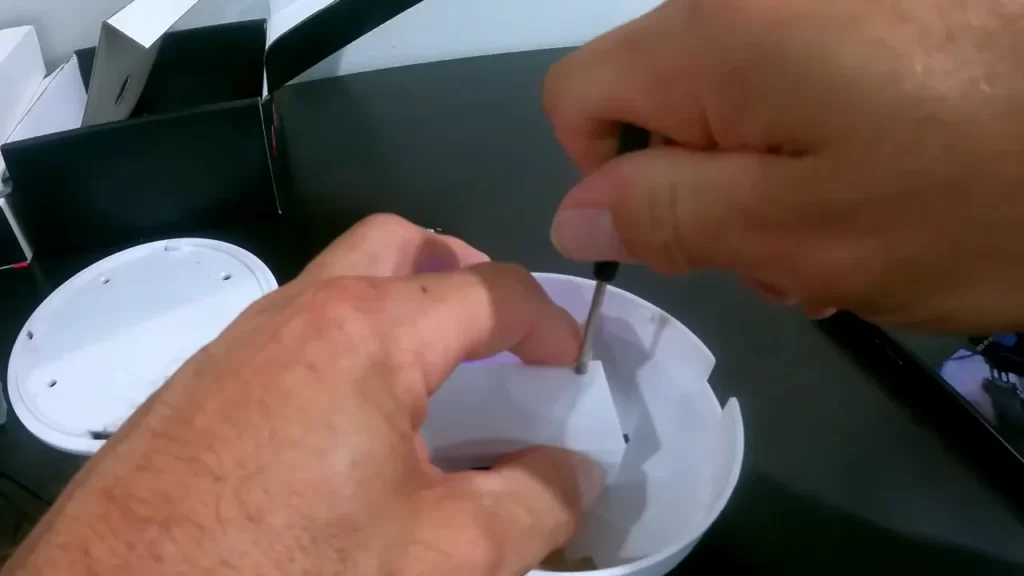
Once you have completed the preparation and safety measures, it’s time to remove the smoke detector cover. Follow these steps:
- Carefully remove the screws holding the smoke detector cover in place using a screwdriver.
- Gently detach the smoke detector cover from the base by twisting it counterclockwise.
Mounting the Covert Camera
The next step in the installation process is mounting the covert camera inside the smoke detector. Follow these steps:
- Using a drill, create a hole inside the smoke detector base at a suitable location for the covert camera.
- Place the covert camera inside the hole, ensuring it is securely held in place.
- Tighten any screws or brackets that come with the covert camera to ensure it remains stable.
Concealing the Wires
To achieve a more discreet installation, it is important to conceal the wires connected to the covert camera. Here’s how you can do it:
- Carefully tuck the wires of the covert camera behind the smoke detector base.
- Use adhesive clips or tape to secure the wires along the edges of the smoke detector base, ensuring they are not visible.
- Avoid pinching or bending the wires to prevent damage.
Reattaching the Smoke Detector Cover
With the covert camera securely mounted and the wires concealed, it’s time to reattach the smoke detector cover. Follow these steps:
- Align the smoke detector cover with the base, making sure it sits flush.
- Twist the smoke detector cover clockwise to lock it into place.
- Secure the smoke detector cover by tightening the screws using a screwdriver.
And that’s it! You have successfully installed a hidden camera in a smoke detector. Remember to test the camera’s functionality and adjust the settings according to your preferences. We hope this step-by-step guide has been helpful in assisting you with the installation process.
Common Challenges And How To Overcome Them
Common Challenges and How to Overcome Them
Installing a hidden camera in a smoke detector can provide an effective way to monitor activities in your home or office discreetly. However, there are common challenges that you may encounter during the installation process. In this section, we will explore these challenges and provide effective solutions to overcome them.
Dealing with Limited Wiring Space
One of the main challenges you may face when installing a hidden camera in a smoke detector is the limited wiring space available within the device. The smoke detector is designed to accommodate electrical wiring for its primary function, which leaves little room for additional components like a camera.
To overcome this challenge, you can consider using a wireless hidden camera that does not require wiring. These cameras are battery-operated and can transmit video signals wirelessly to a receiver or a cloud storage system. This eliminates the need for complex wiring and makes the installation process much more convenient.
If a wired camera is preferred or if a wireless option is not suitable for your situation, you can try using compact cameras specifically designed to fit within the limited space of a smoke detector. These cameras are designed to be discreet and provide high-quality video surveillance without compromising the functionality of the smoke detector itself.
Ensuring Proper Alignment and Viewing Angle
A crucial aspect of installing a hidden camera in a smoke detector is ensuring proper alignment and a suitable viewing angle. Improper alignment can lead to distorted or incomplete video footage, rendering the surveillance system ineffective.
To overcome this challenge, you should carefully follow the installation instructions provided with the hidden camera. Most cameras come with adjustable brackets or mounting options that allow you to position the camera within the smoke detector for optimal viewing coverage.
It is essential to consider the location and purpose of the surveillance when aligning the camera. Placing the camera in a centralized position, such as the center of the room or ceiling, can provide a wide-angle view. Alternatively, if you want to monitor a specific area, you can position the camera accordingly for a narrower angle.
In conclusion, overcoming the common challenges of limited wiring space and ensuring proper alignment and viewing angle in the installation of a hidden camera in a smoke detector can be achieved through creative solutions and careful consideration of camera options. By following these tips, you can successfully install a hidden camera in a smoke detector and enhance your surveillance capabilities without compromising the aesthetics or functionality of your space.
Tips For Testing And Calibrating The Covert Camera
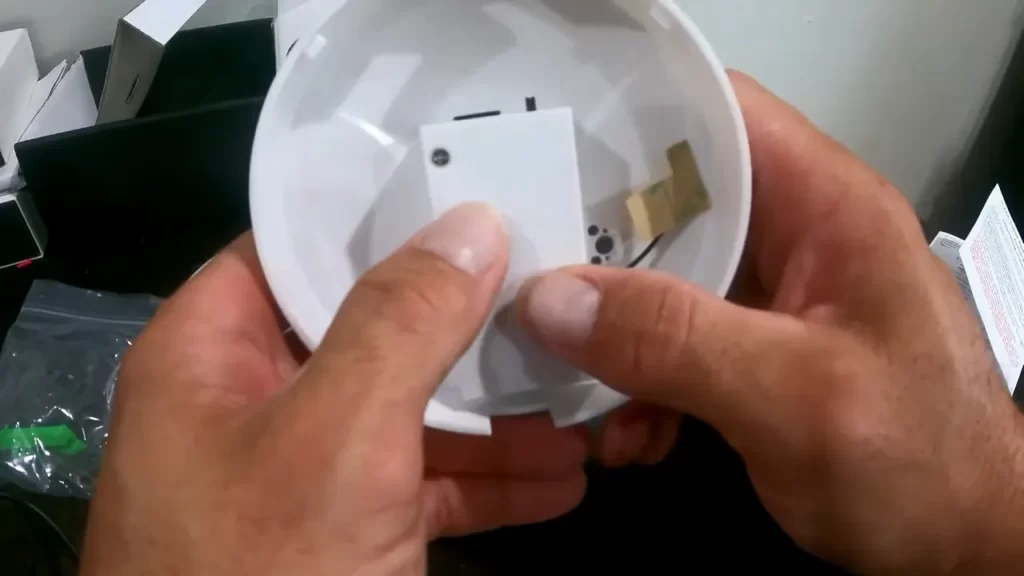
Once you have successfully installed a hidden camera in your smoke detector, it’s important to test and calibrate the camera to ensure optimal performance. In this section, we will discuss some useful tips for testing the video feed quality and adjusting camera settings.
Verifying Video Feed Quality
Verifying the video feed quality is crucial to ensure that your hidden camera captures clear and detailed footage. Follow these steps to check the video feed quality:
- Position yourself in different areas of the room to see if the camera captures a wide enough angle.
- Check the clarity of the footage by observing if the details are sharp and the colors are accurate.
- Test the camera’s low-light performance by dimming the lights in the room and observing if the footage remains clear.
- Ensure that the camera’s focus is properly adjusted. Look for any blurriness or distortion and make necessary tweaks.
Remember, the quality of the video feed is essential in capturing reliable evidence or monitoring activities without detection. Fine-tune the camera settings to achieve the desired results.
Adjusting Camera Settings
Once you have verified the video feed quality, it’s time to adjust the camera settings for optimal performance.
Here are some key settings that you may need to adjust:
| Setting | Explanation |
|---|---|
| Brightness | Control the level of brightness to avoid overly bright or dim footage. |
| Contrast | Adjust the contrast to enhance the visibility of details in the footage. |
| Exposure | Manage the camera’s exposure to ensure proper lighting in various conditions. |
| Resolution | Select the desired resolution for the video feed based on your requirements (e.g., higher resolution for better details). |
| Frame rate | Set the frame rate to determine how many frames per second are recorded. Higher frame rates provide smoother footage. |
By adjusting these settings, you can customize the camera’s performance to match your specific needs. Experiment with different configurations and monitor the results to find the optimal settings for your hidden camera.
Remember, regular testing and calibration are essential to ensure that your hidden camera remains undetectable while capturing high-quality footage. Follow these tips to maximize the effectiveness of your covert surveillance.
Securing And Monitoring The Covert Camera
Once you have installed a hidden camera in a smoke detector, it is crucial to securely mount and monitor the camera to ensure effective surveillance without detection. In this section, we will discuss two important aspects of securing and monitoring the covert camera: connecting to a recording device and remote monitoring options.
Connecting to a Recording Device
Connecting your hidden camera to a recording device is essential for capturing and storing footage. This can be done using various methods, depending on your specific requirements and equipment. Here are a few options to consider:
- Wired connection: One of the most reliable options is to directly connect the camera to a recording device using a cable. This ensures a stable and uninterrupted connection, minimizing the risk of signal loss.
- Wireless connection: If you prefer a more convenient setup, wireless options are available. These allow you to transmit the camera’s video feed wirelessly to a compatible recording device, eliminating the need for cumbersome cables.
- Network connection: Another popular choice is to connect the camera to a local network, which enables you to access and record footage from multiple devices connected to the same network. This method offers flexibility and remote monitoring capabilities.
Remote Monitoring Options
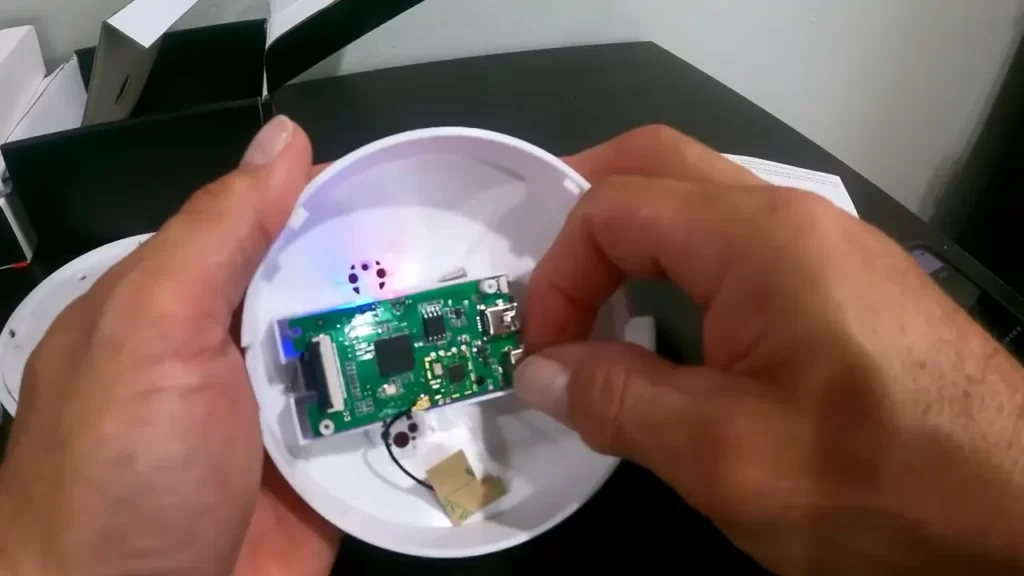
With advancements in technology, remote monitoring of hidden cameras has become increasingly accessible and convenient. This allows you to keep an eye on your premises even when you are away. Here are a few remote monitoring options to consider:
- Mobile apps: Many hidden camera systems are equipped with dedicated mobile apps that enable you to access the camera’s live feed from your smartphone or tablet. This provides real-time monitoring and the ability to receive alerts or notifications when suspicious activity is detected.
- Web-based interfaces: Some camera systems offer web-based interfaces that allow you to access the camera’s live feed using any internet-connected device with a web browser. This provides flexibility and convenience for remote monitoring from various locations.
- Cloud storage: Utilizing cloud storage services, you can securely store recorded footage from your hidden camera. This eliminates the risk of losing crucial evidence in case of theft or damage to the recording device.
By considering the various options for connecting to a recording device and implementing remote monitoring capabilities, you can maximize the effectiveness of your hidden camera system. Remember to always prioritize the security of your camera and ensure compliance with legal and ethical considerations when conducting covert surveillance.
Legal Considerations For Covert Camera Usage
When it comes to covert camera usage, it is essential to understand the legal considerations to ensure you are adhering to privacy laws and regulations. Installing a hidden camera in a smoke detector may seem like a discreet way to monitor your surroundings, but there are certain legal aspects that need to be taken into account. In this section, we will explore the key legal considerations you should be aware of before using a covert camera in this manner.
Privacy Laws and Regulations
Privacy laws and regulations vary from country to country and even among different states or regions. It is crucial to familiarize yourself with the specific laws that apply to your location when it comes to using a hidden camera. These laws dictate the circumstances under which you can record or monitor individuals in private spaces.
Consent and Disclosure Requirements
When using a hidden camera, obtaining consent from individuals who may be recorded is of utmost importance. Consent requirements can differ based on the jurisdiction and the type of location being monitored. Some areas may require explicit consent from all parties involved, while others may only necessitate a single-party consent. It is important to comply with these regulations to avoid any legal consequences or violation of privacy rights.
Additionally, it is crucial to carefully consider the disclosure requirements when using a covert camera. In many jurisdictions, it is mandatory to inform individuals that they are being recorded in private spaces. This disclosure can be done through visible signs or by informing individuals directly. Violating these disclosure requirements can lead to severe legal consequences and undermine the ethical aspect of using covert cameras.
Legal Penalties for Misuse
It is essential to understand that misusing covert cameras or not adhering to the legal considerations can result in serious legal penalties. These penalties can include fines, civil lawsuits, and even criminal charges, depending on the severity of the violation. To avoid legal troubles, it is crucial to thoroughly research and comply with the laws applicable in your area.
Conclusion
Before installing a hidden camera in a smoke detector or any other covert location, it is important to educate yourself about the legal considerations involved. Familiarize yourself with the privacy laws and regulations in your area, ensure proper consent and disclosure, and understand the potential legal penalties for misuse. By doing so, you can not only protect yourself legally, but also demonstrate a responsible and ethical approach to covert camera usage.
Maintaining And Troubleshooting The Covert Camera
Regular maintenance and troubleshooting are essential to ensure the optimal functioning of a hidden camera installed in a smoke detector. By following proper cleaning techniques and addressing common issues, you can prolong the lifespan of your covert camera and maintain its effectiveness. In this section, we will explore the steps involved in regular cleaning and maintenance, as well as how to troubleshoot common problems that may arise.
Regular Cleaning and Maintenance
Keeping your covert camera clean is crucial for ensuring clear and reliable surveillance footage. Dust or debris can obstruct the lens and affect the quality of the video. Follow these steps for regular cleaning and maintenance:
- Power off: Before starting the cleaning process, ensure the power to the hidden camera is turned off. This avoids accidentally triggering any recording or transmitting functions.
- Remove the casing: Gently detach the smoke detector casing, being careful not to damage any components or cables. Most smoke detector cameras have easily removable casings for convenient access.
- Clean the lens: Use a soft, lint-free cloth slightly dampened with a gentle lens cleaner or water to wipe the camera lens. Avoid using abrasive materials or harsh chemicals that may scratch or damage the lens.
- Dust the interior: With the casing removed, use a can of compressed air to blow away any dust or debris that may have accumulated inside the smoke detector housing.
- Reassemble: Once the lens and interior are cleaned, carefully reassemble the smoke detector casing, ensuring all components are properly aligned and connected.
By regularly following these cleaning and maintenance steps, you can keep your covert camera in optimal condition, maximizing its performance and lifespan.
Troubleshooting Common Issues
While hidden cameras in smoke detectors are designed for seamless surveillance, occasional issues may arise. Here are some common problems and troubleshooting tips:
| Issue | Troubleshooting Solution |
|---|---|
| Camera not capturing any footage | 1. Check power source and connections 2. Verify if the memory card has available space 3. Reset the camera to factory settings if necessary |
| Blurry or distorted video quality | 1. Clean the camera lens using a soft cloth 2. Adjust the focus settings if applicable 3. Ensure sufficient lighting in the surveillance area |
| Camera overheating | 1. Check if the camera is placed in a well-ventilated area 2. Ensure there are no obstructions blocking the airflow 3. Remove dust or debris that may be affecting the cooling |
Remember, if you encounter persistent issues or problems beyond your troubleshooting capabilities, it’s advisable to consult the manufacturer’s guidelines or contact their support for further assistance.
Recommended Covert Camera Brands And Models
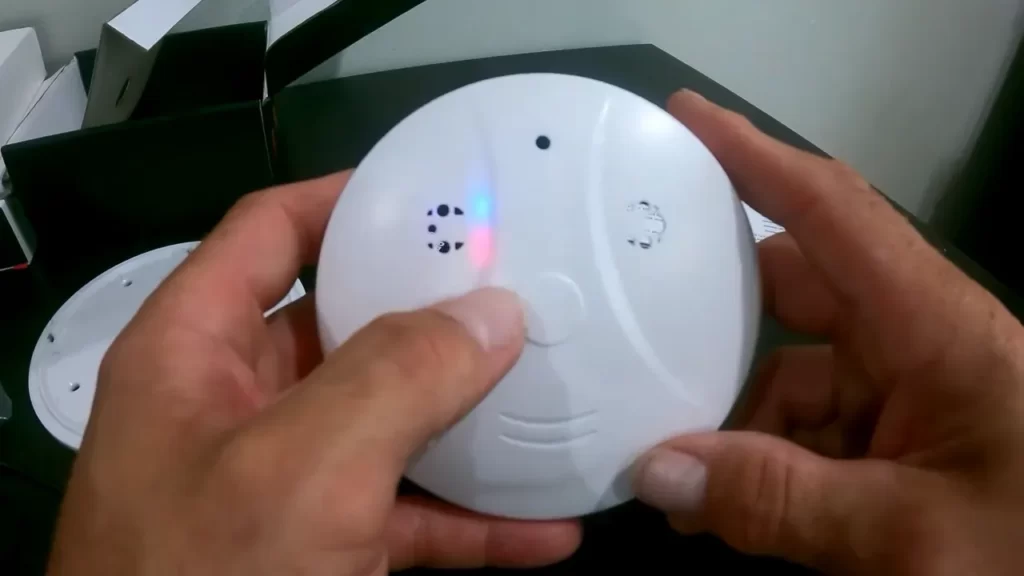
When it comes to installing a hidden camera in a smoke detector, choosing the right camera brand and model is crucial. You want a camera that not only blends seamlessly into your environment but also provides high-quality video footage. Here, we will discuss two recommended covert camera brands and models that have received rave reviews from users.
Brand A – Model X
Brand A is a well-known and trusted name in the surveillance industry. Their Model X covert camera is a popular choice due to its advanced features and user-friendly design. This camera is specially designed to fit perfectly into a smoke detector, making it virtually undetectable to the naked eye.
Model X boasts a high-resolution video recording capability, ensuring that you capture every detail with exceptional clarity. Its wide-angle lens provides a broad view of your surroundings, minimizing blind spots effectively. With its built-in Wi-Fi, you can conveniently access the live feed from your smartphone, tablet, or computer.
One of the standout features of Model X is its motion detection technology. This allows the camera to start recording automatically whenever it detects any movement, ensuring that you don’t miss any important events. Furthermore, the camera supports loop recording, which means it will overwrite old footage with new recordings when the memory card is full, eliminating the need for manual intervention.
Brand B – Model Y
Brand B is another reputable brand known for producing top-notch covert cameras. Their Model Y has gained popularity among users due to its exceptional performance and discreet design. With its compact size and smoke detector appearance, Model Y blends seamlessly into residential or commercial settings.
This camera excels in delivering high-resolution video footage, even in low-light conditions. Equipped with night vision capabilities, Model Y ensures clear visibility and sharp images, making it suitable for 24/7 surveillance. Its wide dynamic range feature compensates for variations in lighting, ensuring your footage is well-balanced and detailed.
Model Y offers multiple recording modes, including continuous recording, scheduled recording, and motion detection recording. You can choose the mode that best suits your needs and set up a customized recording schedule. Additionally, the camera supports remote viewing, enabling you to monitor the live feed from anywhere using your smartphone or computer.
In conclusion, when it comes to hidden cameras in smoke detectors, Brand A’s Model X and Brand B’s Model Y are both excellent choices. Each model offers unique features and exceptional performance, ensuring you have a discreet and reliable surveillance solution. Consider your specific requirements and preferences before making a purchase, and enjoy the peace of mind that comes with having a covert camera in your smoke detector.
Frequently Asked Questions On How To Install A Hidden Camera In A Smoke Detector
Can You Hide A Camera In A Smoke Detector?
Yes, it is possible to hide a camera in a smoke detector.
How Do You Find A Camera On A Smoke Detector?
To find a camera in a smoke detector, carefully inspect the device for any suspicious or unusual features. Look for small lenses or gaps that may indicate a hidden camera. If you suspect a camera is present, consult with a professional to ensure your privacy and security.
Does Hidden Camera Detector Device Work?
Yes, hidden camera detector devices are effective in finding hidden cameras. They use advanced technology to detect radio frequencies and lens reflections, helping you locate hidden cameras easily. These devices are reliable and provide peace of mind by ensuring your privacy and security.
Where Is The Best Place To Put A Hidden Camera?
The best place to put a hidden camera is in a discreet location that provides an optimal view of the desired area. Ideal spots can include bookshelves, potted plants, or smoke detectors. Ensuring the camera is well-hidden can help capture important footage without drawing attention.
How Do I Install A Hidden Camera In A Smoke Detector?
Installing a hidden camera in a smoke detector involves opening the casing, connecting the camera to a power source, and concealing it inside the detector. It is important to follow the manufacturer’s instructions and ensure the camera is positioned correctly for optimal surveillance.
Conclusion
Installing a hidden camera in a smoke detector can be a valuable security measure for your home or office. By following the step-by-step instructions outlined in this blog post, you can ensure that you have an effective surveillance system in place.
Remember to consider the legalities and privacy concerns associated with using hidden cameras. With proper installation and responsible usage, you can have peace of mind knowing that your property is protected. Stay vigilant and stay safe.
